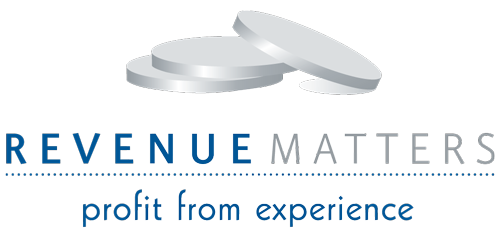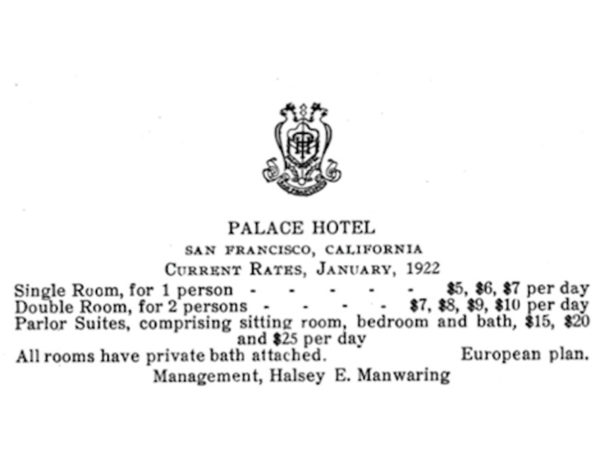
The function of pricing is a pivotal component of revenue management that requires practitioners to thoughtfully consider various influences in order to develop a strategy that best fits. It should be stressed that pricing is not synonymous with revenue management but is rather, one activity within a greater process which includes other elements such as tracking, forecasting, inventory management, distribution and communication to name a few. Revenue management can best be defined as a business process designed to optimize the financial performance of an asset through all market conditions. Pricing is an extremely critical component of this process that can’t be ignored. Get it right and the enterprise is set up to flourish. Get it wrong and… well, let’s just say that it is critical that you get it right.
Owners, asset managers, general managers, controllers, marketing directors and others players whose primary day-to-day focus is not on revenue management may exert considerable influence on pricing strategies that are ultimately deployed. While the motivation behind decisions made by these individuals are well intended, performance may not always match expectations, which can obviously be frustrating for all stakeholders at a given property. In other cases, pricing actions of one or two competitors are relied on heavily to determine how prices are to be set. In the latter case, this normally signals that broader strategic objectives have not been clearly defined or articulated. This article is designed to outline a proven approach to establishing a pricing strategy to avoid these pitfalls and to enhance the impact that pricing can have on overall financial performance of a hospitality asset.
There are six fundamental building blocks to consider when establishing a pricing structure. It is important to consider each separately and independently of one another first before considering the interplay that naturally exists between them. This will contribute to objective price setting and provide additional clarity into the individual factors that combine to drive pricing decisions.
1. Marketing Objectives
Clearly articulating the marketing objectives of an organization will enable pricing to support those objectives. For example, one property may be interested in penetrating a new market (either by geography or by segment) whereas; another property may be interested in driving market share within a given segment. Yet another property, perhaps one in desperate need of renovations, may simply hope to maintain their existing client base. In any case, the pricing approach that best supports these different marketing objectives will need to be addressed appropriately.
Taking the time needed to ensure that all key stakeholders are aligned on marketing objectives is essential. This is a foundational component of any discussion around pricing and one that is often overlooked. It is also important to avoid making general assumptions around the means to a given outcome. For example, driving average daily rate (ADR) may be a stated goal. One stakeholder may falsely assume that the best way to drive ADR is to increase prices associated with published rates. In certain circumstances this approach would actually result in substandard ADR performance. While completely counterintuitive, dropping published rates from current levels in these cases would actually help drive ADR. As you can see from the above example, it is important to not only state a desired outcome, but to clearly define an approach that will contribute to that outcome.
2. Mix of Sales
It is critical that you understand where your business is coming from and in what areas you want to see this shift moving forward. In general terms, this could mean either penetrating existing demand or sourcing new business. Further analysis will reveal if you can reasonably anticipate driving business away from your competitors, retaining certain customers and/or cannibalizing existing sales from within either your own operation or from sister properties.
Mix of sales is directly related to customer behavior in that it is certain customer segments that you are trying to influence. Analyzing purchase patterns, booking policies, spend profiles, and stay patterns (for guestrooms) or day-part usage (for spa or banquet space) will point to elements that either support or hinder your objectives. Reviewing mix of sales in isolation will also serve to trigger insights into vulnerabilities and reveal opportunities to capitalize on an uncontested market.
3. Channel Production
Once your mix of sales has been considered, anticipating through which channels this new business will flow becomes important. Certainly sales and/or channel distribution costs play an important role, but so too does the cost of servicing guests. For example, a room reservation coming through a brand.com channel may require the property to offer points and other brand-related amenities whereas another channel may be devoid of such a load. Conversely, loyalty (and presumably therefore frequency) and/or favorable ancillary spend propensity amongst guests can vary widely, yet there may be a very strong correlation between guest profitability and channel. An analysis of these correlations could yield significant benefit.
With this knowledge, deploying multiple pricing techniques across different channels to throttle contribution levels appropriately based on property needs at various times becomes much more predictable and places more control into your hands.
4. Perceived Value
Having a clear picture of how various customers view your products and services in relation to your direct competitors plus other solution substitutes is wise. Interviewing constituents to not only understand what elements are important to them, but to gain an appreciation of why they are important, will provide you with a valuable view into client motivation. In the case of a golf course, perhaps a round there can be completed in 4-hours or less which still leaves time for client entertainment or family commitments whereas at a competitive course has choke points on it that can cause a round to last 5 hours. This is a meaningful differentiator for some players.
In all situations, it is important to eliminate price from this stage of the analysis since your objective here is to isolate valued competitive differentiators and mitigate the tendencies towards commoditization – which is quickly introduced when price comparisons are considered. Armed with this information, you can more easily emphasize certain aspects of your offerings and downplay others. Any take-away from this exercise would be directly applicable to members of your marketing department, sales team, reservations office, and outlets for example. It will also enable you to ensure price/value relationships are appropriate throughout your operation. Reviewing scores and comments on popular social media sites is a quick way to get started without incurring the expense of conducting a formal study and casual guest interaction while on property is another.
As stated previously, thinking about customer segmentation in terms of motivation and behavior rather than what has been established on the financial statements is the secret. By doing so, you can more readily establish pricing policies that support growth in certain segments and discourage growth in others.
5. Profitability Analysis
Estimating your variable costs associated with a given asset is helpful in establishing a price floor above which variable costs are covered and sales at this price will likely contribute, however marginally, to fixed costs. For example, in the case of a ballroom, temperature will not likely match outside air temperature for most of the year, so it is the “incremental” energy required to bring the room to a comfortable temperature while occupied that needs to be factored into variable costs. Of course, set-up, cleaning, lights and front-line banquet staffing etc. should be factored into variable costs too. When in doubt, always overestimate these values.
In the rooms department, a quick check of rate plan production and room type utilization will reveal if any threat to profitability exists. If it does, immediate corrective action can be taken.
On the other hand, a given customer segment for a given stay pattern may contribute significantly to outlet profitability. Analyzing these aspects will uncover previously undetected opportunities for your property to drive revenue throughout your operation.
6. Competitive Activity
Tracking competitive pricing moves over time is natural in our business given that it is very dynamic in most markets and price transparency has improved through the advent of the Internet. Reviewing published pricing from the year prior to gain additional insight into published rate trends within given month or season will provide additional context. Knowing when and with what frequency others hold their revenue strategy meetings, what renovations have been completed, product make-up, marketing objectives, customer wins and losses etc. will allow for smarter decision-making.
Using a technique of weighting competitors based on exerted influence (relative to the subject property) and comparing this to published pricing for each competitor on a certain date will yield an average market reference rate that can be used as a benchmark for pricing purposes. Reviewing the market reference rate over the course of time will reveal trends related to availability and will serve to flag periods of anticipated high or low demand. Within this general framework, you will be able to more readily position your rates and restrictions to optimize performance given the remaining inventory available to you during a given period of time.
Once the six building blocks have been thoroughly analyzed independently of one another, the next step will be to fit them together to generate a comprehensive plan of attack.
Using a “what-if” analysis to manipulate various factors mentioned above such as volumes and pricing across primary customer segments and channels where applicable will provide you with a theoretical best-case scenario for financial performance. Going through this exercise will help you to objectively evaluate the various elements that go into a pricing decision begin to shed light on pricing structures that will most likely contribute to greater profitability. It will also serve to reduce the knee-jerk reactions to individual competitors published pricing changes and allow your property to be guided instead by a broader range of parameters.
The tactical aspects relating to the development of distribution partnerships, group sales suggested selling guidelines, minimum acceptable rates, booking policies, room type rate premiums, dynamic packaging, merchandizing and various other revenue management decisions will naturally follow. These decisions will be better as they will be made within an established context and are more likely to support your stated organizational performance targets.
This article was first published on Hotelexecutive.com


